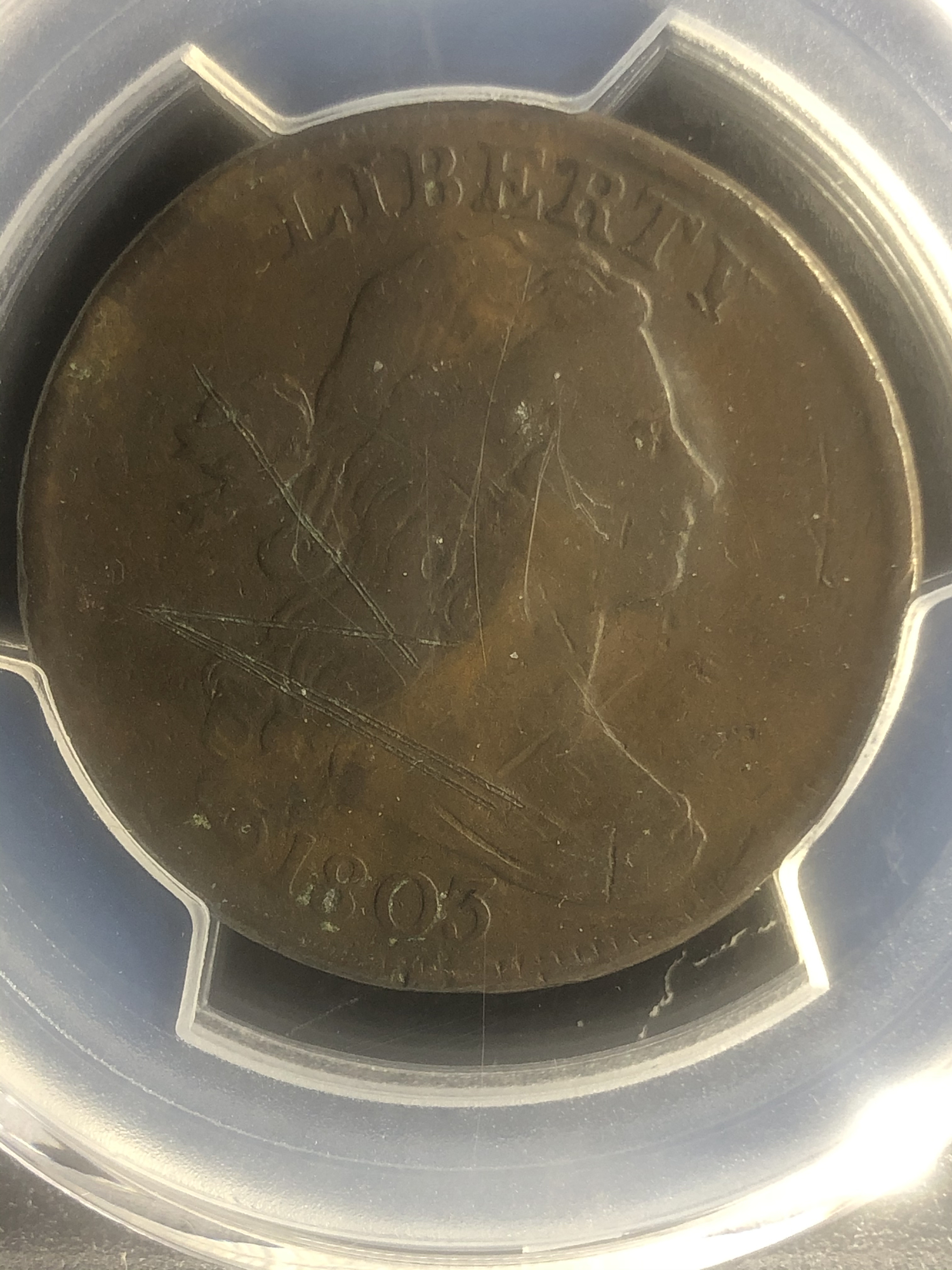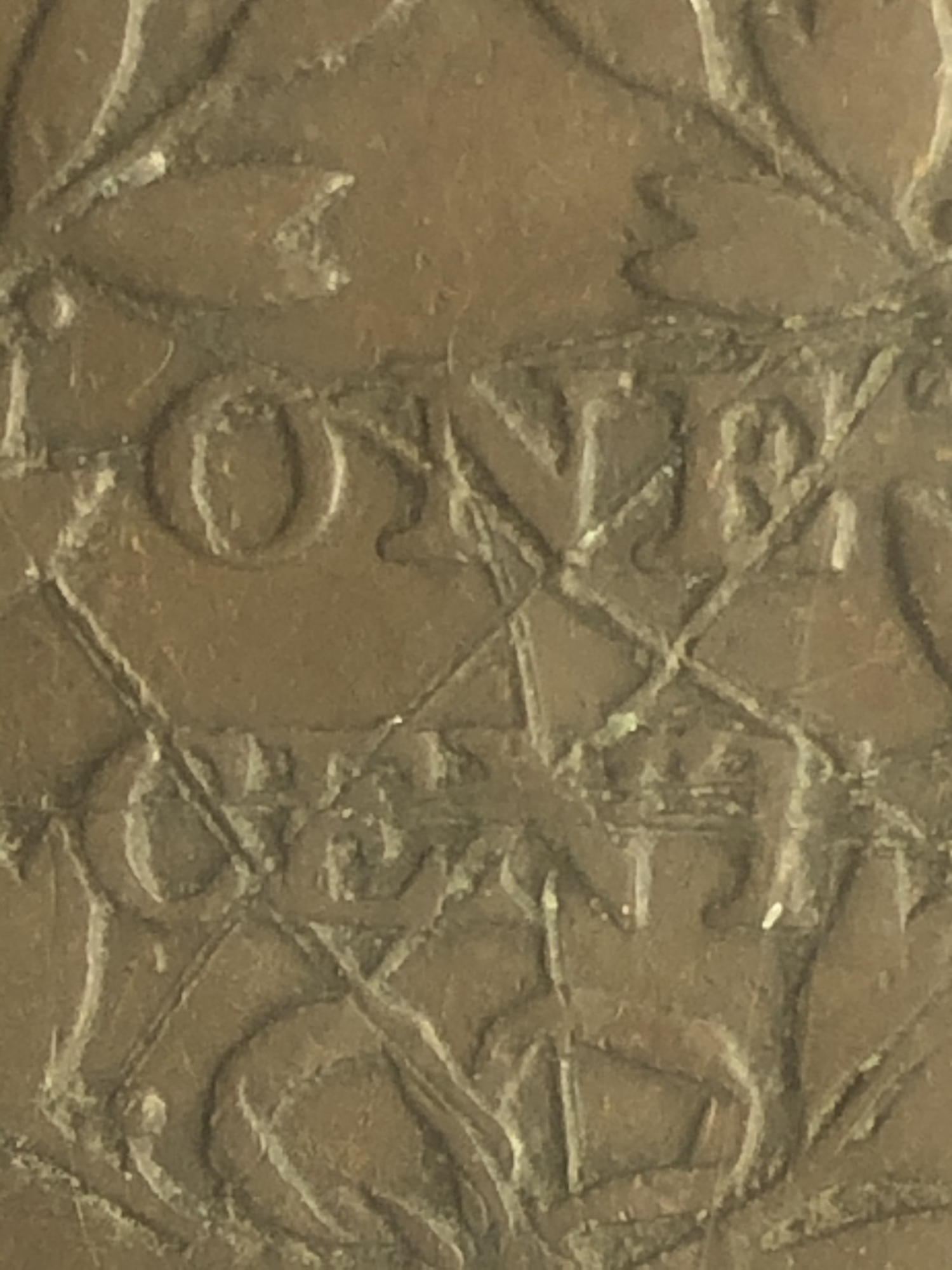Options
1803 Large Cent




Hello Everyone,
You are always so helpful! I have another stumper for you to ponder....
This is an 1803 Small Date, Large Fraction in a PC holder fine details - graffiti.
I believe it to be S-259....
Although granted there are some light scratches, the main “graffiti” is actually raised metal which you can clearly see going underneath both N’s in One Cent.
Dies had to be costly and time consuming to make, so I hesitate labeling this struck from cancelled dies. .... so what other possible explanations are there?
Thank you!
1
Answers
Using a sharp blade against the metal surface of a coin can cause a pressure ridge to form above the surface of the fields. While it is raised, it is still post-strike damage.
Agree. The raised lines are along the incuse "trench".
It's not easy to tell for sure from 2D pictures, but the raised elements all seem to be metal displaced by the incuse scratches. The vertical scratch through the two N's appears to break the left upright of the N in ONE. It probably also cuts through the crossbar of the N in CENT, but it may have been obscured by the horizontal abrasions across the central reverse.
I haven't seen any known cancelled dies with these kinds of markings, and cancelling of dies wasn't a regular practice at the time, given the number of uncancelled dies the "midnight minters" had available for making restrikes in the mid 19th century. I'm no early copper expert, but graffiti seems like the most plausible explanation to me.
https://m.facebook.com/story.php?story_fbid=4264227713600815&id=100000408862795
http://rover.ebay.com/rover/1/711-53200-19255-0/1?icep_ff3=2&pub=5575378759&campid=5338273189&customid=&icep_item=124634667792&ipn=psmain&icep_vectorid=229466&kwid=902099&mtid=824&kw=lg&toolid=11111
Looking at the pictures, it appears to be PMD....incuse/raised material from a sharp instrument. Cheers, RickO
Yes, pmd is correct. There was no canceling of dies back then. They were used until complete failure. This is why the late die stages often show heavy die cracks, retained cuds, etc.